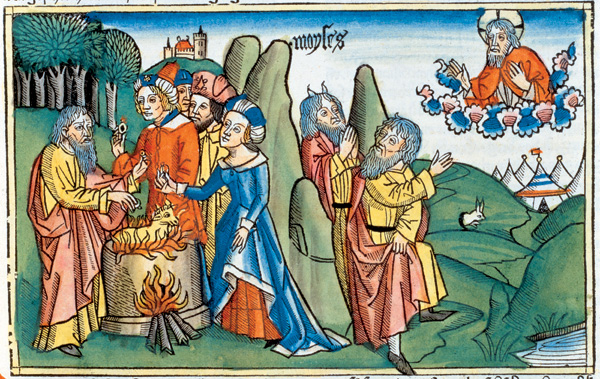Image Details

Private Collection/Bridgeman Art Library
“The people took off their gold rings that were in their ears and brought them to Aaron. This he took from them and cast in a mold, and made into a molten calf” (Exodus 32:3–4). This illustration from the 15th-century Nuremberg Bible, an early printed Bible, shows Aaron (left) collecting the jewelry and, in the fire, the calf formed from the gold. Later, when trying to explain the situation to his irate brother, Aaron claims the Golden Calf emerged from the fire on its own: “I said to them, ‘Whoever has gold, rip it off.’ They gave it to me and I hurled it into the fire and out came this calf!” (Exodus 32:24). Is Aaron simply lying? According to Victor Hurowitz, Aaron is expressing a belief that was common among Israel’s idol-worshiping neighbors: Even if humans provided the materials, divine statues were made by the gods themselves, not by people. A cuneiform text from Mesopotamia prescribes that the hands of the artisan should be ritually cut off after making an idol, to signify that he was not its real sculptor.
